The Alligator Pear
Well, as you're probably gathering by now, this blog is something of an on-again-off-again kind of a venture. Real life, with all its associated distractions, keeps me pretty busy these days, but I fully intend to keep updates coming. So fear not.
A while back, I promised Avocado Lady, one of the few users of the Fruit Blog Forum, a post on avocados. So here it is.
I have to admit that, botanical technicalities aside, part of me has a hard time believing tha avocados are fruits and not vegetables. Somewhere early in my formative years they got firmly shelved in my brain with the veggies, and I can't quite pry them out of that role. I think it's the whole guacamole thing. Guacamole just doesn't seem like something you make out of fruit.
The reality is, of course, that avocados are indeed fruit. Some of the West Indian types, grown mainly in Florida and the Caribbean, seem a little more like fruit to me, maybe because of the lower oil content and sort of nutty, creamy taste (Fruit aren't supposed to be oily, in my book). (Except when they're nuts, I guess.) There are really three types of avocado. The Mexican type, Persea americana var. drymifolia and related hybrids, are thin skinned, with a high oil content. There's also the aforementioned West Indian avocado, Persea americana var. americana which are larger (and blander) than the rest, lacking the characteristic anise-scent, and the Guatemalan type, Persea nubigena var. guatemalensis, which is high in oil like the Mexican but with a thicker, rougher skin. All three are interfertile, and most commercial cultivars are hybrids between the groups, though there is a tendency to group cultivars into these three groups based on their characteristics, regardless of their genetic background.
The avocado is probably a native of southern Mexico, but had spread into north to southern Texas and south into Peru and Ecuador by the time of the European conquest, with a fairly impressive record of improvement in fruit size. The new arrivals accelerated the avocado's spread, distributing it first to the Caribbean (it is recorded in Jamaica before 1700), then the Philippines, Hawaii, southeast Asia and the Indian subcontinent. In the native Aztec language, Nahuatl, it was called ahuacatl, meaning "testicle", no doubt due to its shape. (The Aztec name is still used in parts of Mexico. Nahuatl also gave us tomatl (tomato), xocolatl (chocolate), cacaotl (cacao), and coyotl (coyote). See a pattern?). The Spanish were notoriously bad with the Aztec's 'tl' sound, and changed the name to aguacate which remains the standard Spanish term. Other Spanish speakers confused it with abogado (meaning 'lawyer', which, though less logical, is vaguely more appealing than 'testicle'), which gave us our own avocado. The common name "alligator pear" is probably a reference to the green, bumpy skin, although some have attributed this to yet another mispronunciation. It's also been called "butter pear" or "vegetable butter", likely due to the oily flesh.
It's a member of the Lauraceae, which makes it a cousin of such things as cinnamon and sassafras. More closely related is the genus Beilschmiedia, commonly called the Anay (try Googling for "Anay" and you'll turn up a million misspellings of the word "any" and very little real info.) Locally collected and consumed in Mexico, the anay is very similar to the avocado in many ways, with an extremely oily and high protein flesh. (To save you the pain of googling for information, a nice article on the anay from the California Avocado Society is available as PDF here.)
The tree is evergreen, and extremely dense and fast-growing (it has been known to approach heights of 100 feet). Grown from seed, the tree remains in a juvenile state for many years, sometimes up to two decades, during which it produces no fruit. This is overcome commercially by grafting wood from mature trees onto seedling rootstock, which usually bears within a year or two. Flowers occur in panicles of several hundred, but very few actually set fruit, generally only one per panicle. While the flowers contain both male and female organs, they are either "type A", in which shed pollen in the morning and are receptive in the afternoon, or "type B", which are the reverse. Strangely (to me, anyway), the fruit can hang on the tree for well over a year, ripening only after picking. This convenient feature allows growers a great deal of flexibility in timing production to match the market.
In the United States, the bulk of the industry is located in California, with a smaller industry in Florida. Both of these are dwarfed by the larger industries in Mexico and the Dominican Republic. South Africa and Mediterranean regions export substantial amounts of the crop as well. Brazil produces a lot of avocados, but very little of the crop is for export. The tree is limited largely by it's lack of hardiness, and most tolerate only mild freezes, though some Mexican types can survive as low as 19°F.
At least 90% of the California avocado production is a single cultivar: 'Hass'. 'Hass' is frequently considered a Guatemalan type, but in reality it is probably a hybrid between a Guatemalan and a Mexican avocado. The cultivar got its start in 1926, when mailman Rudolph Hass planted several avocado seedlings, with the intention of grafting a cultivated variety onto it. Two variation on the story exist: in one, Hass never gets around to grafting the seedlings, in another Hass grafted the popular cultivar 'Fuerte' onto his seedlings, but one of the seedlings stubbornly rejected his attempts at grafting. This would probably have doomed most rootsock avocado trees to the brushpile, but this particular seedling proved to have remarkably good fruit, and Hass spared it. Whatever the exact story, Hass eventually patented it and named it after himself. 'Hass' is easy to peel and a reliable producer, and had the unusual characteristic of turning a deep purple, almost black, when ripe. While this would seem convenient, the dark color initially turned off many buyers, thinking the fruit had gone bad.
Other cultivars abound: 'Fuerte', originating sometime before 1911, is probably one of the earliest named cultivars. Widely grown in South America and Australia, it is another Guatemalan x Mexican hybrid like 'Hass'. While 'Hass' dominates the U.S. market, 'Fuerte' has long been the prefered cultivar in Europe, and is often considered superior in flavor. 'Zutano', a Mexican cultivar, is grown largely for it's cold hardiness, despite inferior quality, poor handling qualities, and disease problems (Another cold hardy variety is 'Bacon', which is recommended for higher altitude areas.) A few Mexican cultivars are grown in Florida, such as 'Brogdon', but the industry is mostly West Indian types and their hybrids, such as 'Booth 7' and 'Booth 9', and 'Lula', which has an unusually high oil content for a West Indian type (Florida has tried to capitalize on their low oil avocados by marketing them as 'Slimcados'.)
Avocado is blessed with a wonderfully diverse range of germplasm, and active breeding continues in many locations, including South Africa, Taiwan, Israel, and California. The California program, located at the University of California in Riverside, has a wonderful website, which includes a cultivar database of over a 1,000 varieties, if my meager offerings above are inadequate for you needs.
Other useful pages include the avocado page of the California Rare Fruit Growers Society, here, and the always fascinating New Crops database at Purdue University, here.
Again, my apologies to everybody for my long absence. I'd like to promise I'll do better in the future, but I know myself too well for that. Thanks for your patience!
Update: Some one just passed along this great page of avocado info from UCLA.



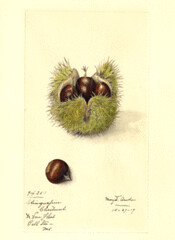
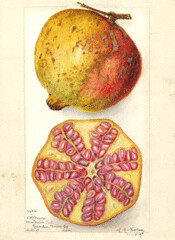

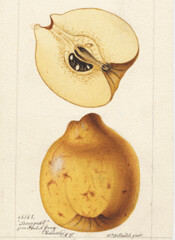




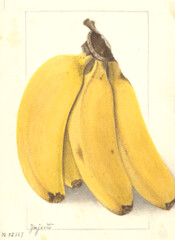

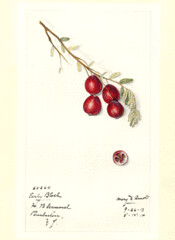
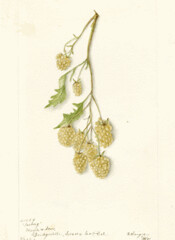
21 Comments:
well, the ucla page answered all my questions I had for you about mexican avos. When I was in Oaxaca last year, they used both the leaves in cooking as a seasoning, and served tiny avos which could be eaten skin and all.
Hi,
Avocado Lady here. Thanks for the update on avos ... I even learned some things I had never known.
Actually, I come from a farming family of avocado growers here in California. My dad liked Pinkertons although I only eat Haas avocados (note the spelling).
I will soon have [yet another] food blog myself called Chow Chow Chow. I love cooking and Mexican cooking in particular.
Although I orginally made guacamole with onions and charred tomatoes, I now have found that the purest and tastiest is the simplest. My guac has roughly smashed HAAS avocados (no other variety], lemon juice and salt. Sometimes, I add charred serrano chilies.
Regards ... I will check back on your lovely blog.
Avocado Lady
Thanks, Avocado Lady!
Feel free to share anything on avocados I may have missed...I'm fairly new to them and am hardly an expert.
I'm actually a little surprised to learn your from California, since I'd kind of assumed you were some one I knew here in Florida (we have an acquaintance who is obsessed with avocados...I thought you might be her).
I'm curious about your comment on the spelling: is 'Haas' distinct from 'Hass'? Although before I started looking things up on the subject I just assumed the spelling was 'Haas', the books and webpages I read seemed pretty consistent in using 'Hass' (although one consistently used 'Hess', which I thought might be a different cultivar for a while, but it was introduced the same year, in the same place, with the same description, so I guessed that it was the same.)
Anyway, I'll keep an eye out for your new blog. Thanks for stopping by!
Hi,
Actually, all you need to do it Google "HAAS AVOCADO" and you'll realize that that is the correct name. I have never heard of a Hass avocado.
I have nine uncles [and two aunts] ... all are farmers and grow avocados here in California.
I have only had Florida avocados a few times and I didn't like them. They were stringly and watery. In fact, I don't like any other California avocado other than Haas ... it is rich and buttery. I don't know where you are, but you should try them. ;-)
Good luck blogging!
Avo Lady
Yeah, the Florida avocados are disappointing if you're expecting the more standard type. I find them sort of blandly pleasant, but not so much that I bother to eat them much. I'm in Florida, but when I buy avocados, I generally get Californian/Mexican ones, frequently Hass. (Although I probably buy 90% of my avocados in the form of guacamole at Mexican restaurants).
I'm going to have to disagree with you on the spelling of Hass, however. Both the California Avocado commission (avocado.org) and UC Riverside avocado web site (www.ucavo.ucr.edu) have "Hass" as the spelling, and I figure they ought to know.
If it makes you feel any better, I was convinced it was "Haas" too, until I started looking things up for my post, since it seems like the more standard spelling of the surname. I'm sure plenty of folks use that spelling for the avocado, regardless of the proper name.
I got the Haas spelling from the grocery store... I think I've always seen it spelled that way. But looking now at our friend Wikipedia (perhaps this article was not available in 2005?), it is Hass, after the creator, Rudolph Hass.
Do you know anything about the tiny avocados with edible skins called palte? I get them here in Italy and I have friends that tell me there are lots of them in northern Peru. I don't think this is the tiny Fuerte one sees sometimes in California. The flesh resembles a mexican type, very rich and flavorful, and the skin is edible. The seed is much smaller than a ping pong ball.
Thanks,
-Rick Gush
rickgush@gmail.com
"At least 90% of the California avocado production is a single cultivar: 'Hass'. 'Hass' is frequently considered a Guatemalan type, but in reality it is probably a hybrid between a Guatemalan and a Mexican avocado".
Not True! The batch of seeds that included the Hass all came from Guatemala and were planted by Professor (not mailman) Haas of the U. of California in Montevista.
Hundreds of seeds were planted and
50 variables were checked for. The tree that satisfied the 50 variables best was the present day Hass (it's only "defect" was the fact that it turns black).
I worked with Professor B.O. Berg at UC Riverside - who followed Haas) in late the sixty's and early seventy's and I was surprised to read the version of events you presented here.
ninest123 12.30
prada handbags, tory burch outlet, louis vuitton, polo ralph lauren outlet, louboutin outlet, ray ban sunglasses, louis vuitton outlet, louis vuitton, louis vuitton outlet, longchamp outlet, replica watches, christian louboutin outlet, louboutin shoes, jordan shoes, longchamp outlet, polo ralph lauren outlet, replica watches, michael kors outlet, ray ban sunglasses, louis vuitton, michael kors outlet, nike free, michael kors outlet, burberry, longchamp, cheap oakley sunglasses, gucci outlet, ugg boots, michael kors outlet, michael kors, ugg boots, oakley sunglasses, ray ban sunglasses, nike air max, ugg boots, uggs on sale, tiffany and co, michael kors outlet, oakley sunglasses, prada outlet, tiffany jewelry, burberry outlet online, oakley sunglasses, ugg boots, nike air max, nike outlet, louboutin, chanel handbags, oakley sunglasses
north face, nike roshe, vans pas cher, replica handbags, air force, timberland, lululemon, sac longchamp, ralph lauren pas cher, vanessa bruno, hollister pas cher, true religion jeans, air jordan pas cher, true religion jeans, nike huarache, hermes, true religion outlet, hollister, michael kors, nike air max, michael kors, nike blazer, michael kors, ralph lauren uk, longchamp pas cher, hogan, lacoste pas cher, true religion jeans, nike trainers, mulberry, michael kors, nike free, oakley pas cher, louboutin pas cher, longchamp, north face, nike roshe run, coach outlet, new balance pas cher, ray ban uk, ray ban pas cher, abercrombie and fitch, tn pas cher, nike air max, sac guess, nike air max, air max, burberry, converse pas cher, nike free run uk, coach purses
links of london, moncler, ugg pas cher, sac louis vuitton pas cher, moncler, louis vuitton, bottes ugg, canada goose, moncler, pandora charms, marc jacobs, canada goose, supra shoes, karen millen, canada goose outlet, barbour, doke gabbana outlet, montre pas cher, canada goose, pandora jewelry, hollister, pandora charms, ugg,uggs,uggs canada, canada goose uk, louis vuitton, moncler, coach outlet, pandora jewelry, doudoune canada goose, juicy couture outlet, thomas sabo, ugg boots uk, barbour jackets, louis vuitton, moncler, toms shoes, ugg,ugg australia,ugg italia, replica watches, swarovski, moncler outlet, canada goose, swarovski crystal, lancel, moncler, wedding dresses, juicy couture outlet, louis vuitton, canada goose outlet, moncler, converse outlet
ninest123 12.30
qzz0609
air jordan retro
ray ban sunglasses
polo ralph lauren
longchamp outlet
tory burch outlet
burberry outlet
michael kors outlet
james harden jerseys
ugg outlets
coach factory outlet
christian louboutin shoes
nike factory store
fitflops sale clearance
jordan shoes
pandora
golden goose shoes
canada goose outlet
canada goose jackets
cheap jordan shoes
true religion outlet
www0702
michael kors outlet
ugg boots
polo ralph lauren
coach outlet
chloe sunglassess
san francisco 49ers jerseys
coach outlet
cheap jordans
jimmy choo sunglasses
true religion jeans
qzz0723
ugg boots
canada goose coats
coach outlet
canada goose outlet
salomon shoes
pandora charms
ray ban sunglasses
golden goose sneakers
ugg outlet
prada sunglasses
hermes handbags
yeezy sneakers
michael kors outlet online
coach outlet online
yeezy boost
curry shoes
timberland shoes
golden goose
coach outlet store
adidas stan smith
yeezy boost 350 v2
moncler coat
lebron 15
nike vapormax
air max 95
timberland outlet
michael kors handbags outlet
hermes belts for men
balenciaga shoes
kyrie 5 shoes
balenciaga
moncler
yeezy shoes
paul george shoes
goyard handbags
kobe sneakers
supreme clothing
jordan 1 off white
moncler
curry 7
curry 6
kobe
ggdb
kyrie irving shoes
stone island sale
off white clothing
paul george shoes
off white shoes
curry 8
russell westbrook shoes
golden goose outlet
lebron james shoes
off white shoes
off white jordan 1
hermes
golden goose outlet
off white nike
kd 12 shoes
supreme hoodie
bape clothing
liianhuuan3t82
golden goose outlet
golden goose outlet
golden goose outlet
golden goose outlet
golden goose outlet
golden goose outlet
golden goose outlet
golden goose outlet
golden goose outlet
golden goose outlet
Post a Comment
<< Home